Workshop “EdTech Speed Dating With VR”: Takeaways And Potential
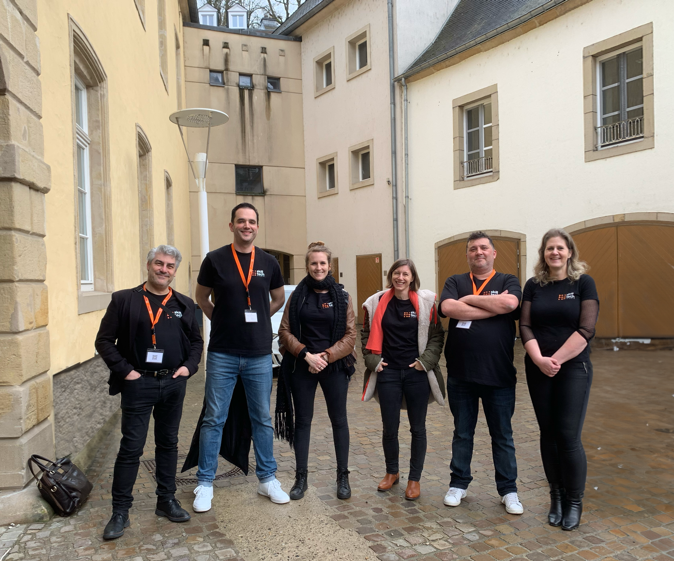
We all know the adage: « Words speak louder than actions ». The following dialogue between two classmates took place in front of an amused LMDDC staff member. The topic was Columbus, one of our bespoke prototypes. One student had already tried it, while the other was considering it with a hint of scepticism.
XX) Go ahead, test it !
XY) Is it cool ? Is it worth it ?
XX) It is.
XY) (quietly) Really ?
XX) Really.
The boy decided to trust his friend’s judgement and to give it a go. A few minutes later, he took off the VR headset and was all smiles.
This anecdote illustrates the positive atmosphere at the second LMDDC workshop "EdTech Speed Dating with VR". In this article, we share our observations, but also technical and practical recommendations. The aim of our workshop was to lower the barrier for educators who are tempted by VR as an EdTech medium. How ? By showing them that they can already do a lot of interesting things without advanced types of equipment. This recap will allow those of you who could not make it to the beautiful venue at Neimenster on 14 and 15 March to catch up. We tried a different format to the first workshop, with open access to our activities on both days and a closed event on the evening of the first.
Before we get to the meat of the matter, thanks are due to the (many) people who were involved in the event in one way or another. Workshop-goers of course, the amazing volunteers from the Lycée des Arts et Métiers, who were a great help on both days, the school teachers who brought their classes to see first-hand how VR could be incorporated into their learning journeys, our colleagues from the Ministry of Education, Children and Youth and other public bodies, representatives from the private sector involved in training, and the members of the local edtech ecosystem who came with a vague idea and left with a concrete project plan. Special mention goes to our stellar panelists : Christian Boudot (Lycée des Arts et Métiers), Matthieu Bracchetti (Virtual Rangers), Deise Mikhail (HUMAN GAMES), Ernest "L_nny" Ribeiro, and our very own Jimmy Fischer, whose insightful remarks helped to deepen the discussion on the future of VR in education. The video of the entire discussion as well as contributions from Thibaud Latour and Gyra Szakmar are available below.
VR ≠ AI
Diversity is both welcomed and encouraged at this type of EdTech gathering. Mission accomplished on this occasion, as we had seasoned gamers, technology enthusiasts, students, educators, school directors, managers and executives from the private sector.
Firstly, we noticed, and were told by many, that VR was a technology they had barely tried in an interactive setting, especially for the over 40s age group. They were travelling in terra incognita and we are proud that their first VR encounter was with the LMDDC. After all, the workshops are part of our mission to spread EdTech knowledge, and introducing new technologies to the edtech ecosystem is a powerful way to do that.
The majority of the participants came for the hands-on experience - to try things out and to play with the prototypes. There was an a priori belief in the equation “VR is entertaining” (and to be fair, it usually is), and this seems to have been the driving force behind the public’s motivation for attending. We hope they left with an understanding of how we prepared the VR prototypes, the technologies we chose and used, and the pedagogical challenges the prototypes sought to address.
Which brings us to the final point of this section: we witnessed a high level of: 1) Motivation, which manifested itself in a comprehensive exploration of the four prototypes Georgia, Amber, Columbus and Herodotus. No-one was left out ! 2) Engagement, as evidenced by an appetite not only to play, but also to complete the activities. The audience enjoyed the dynamic side of the workshop, the constant stimulation of our VR scenarios, and they felt good about completing them. Building confidence is precisely one of the main benefits of using VR in education : studies have shown that learners report 20% higher levels of confidence and self-efficacy at the end of VR-based courses.
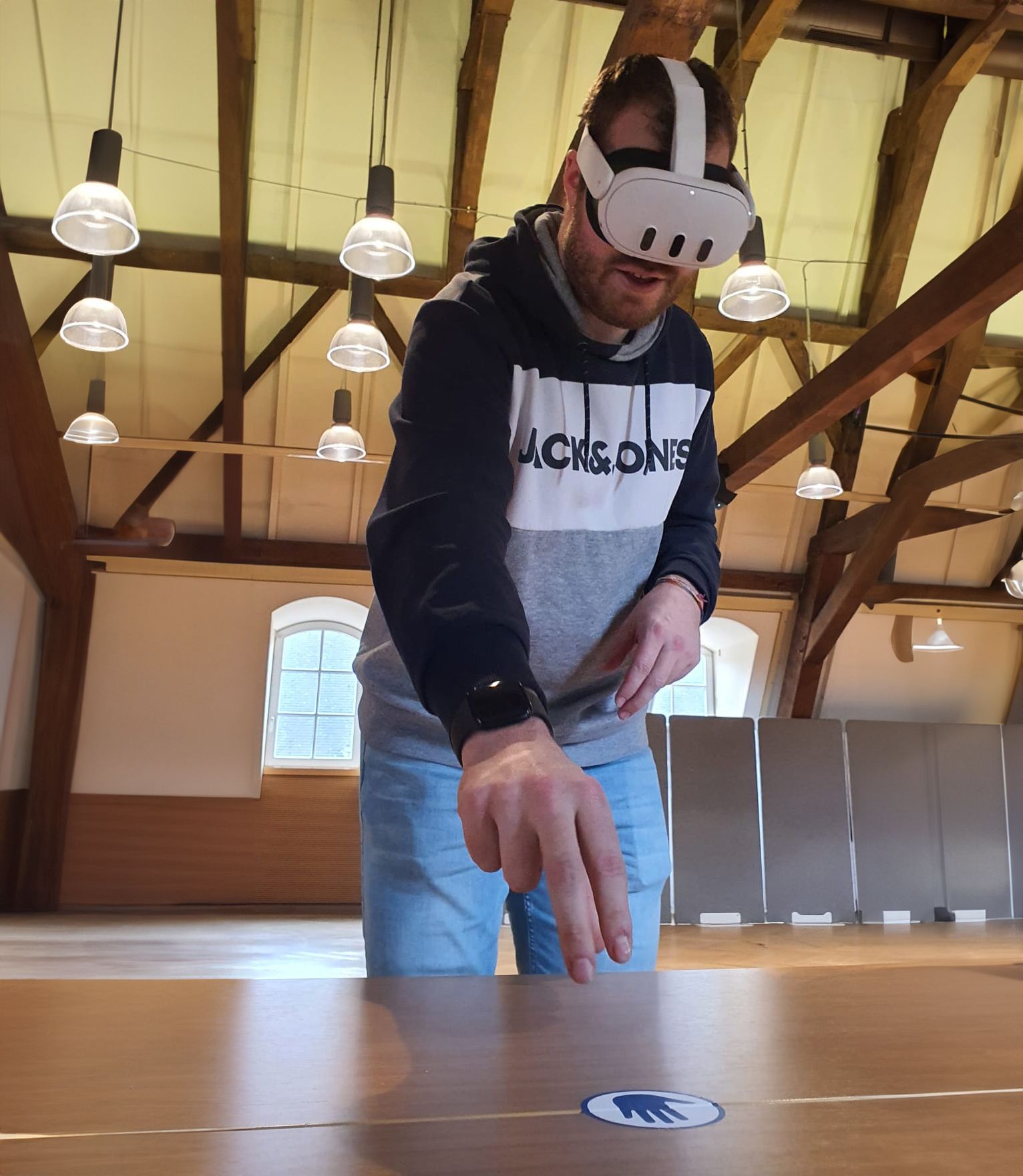
The Prototypes
Our four VR prototypes were developed in-house in less than two months. Overall, we saw a lot of enthusiasm for the design of the content and even more for their use. We designed an intuitive web interface for each of them that allows for direct editing and modification of the learning content within the games. On the browser side, we stuck to basic web technologies (HTML/CSS/JS). On the server side, we chose to write our application in PHP using the twig template engine. This allowed us to better structure the application code while retaining the flexibility of an interpreted language. If your organisation is interested in developing VR, the choices we made and the final outcome prove that it is within reach. It does not necessarily require highly complex skills such as 3D modelling to tailor learning content in some categories for VR experiences, but can potentially cover a wide range of educational contexts.
Amber offers a molecular chemistry forcefield VR experience, where learners take on the role of a small guest molecule navigating towards a larger host molecule, in our prototype a beta-cyclodextrin, and experience the electrostatic forces between both of them. Within the web interface, they can select from multiple small molecules to interact with. They have the ability to rotate around the cyclodextrin and attempt approaches from various angles. To enhance the immersive learning experience, the controller vibrates in proportion to the attractive or repulsive Coulomb force exerted by the cyclodextrin on the molecule. Visualisation and interaction facilitate the understanding of complex molecular structuresand their behaviour.
Columbus is a treasure hunt style VR game designed to engage students in a dynamic learning process. In the game, students answer questions and solve math problems, among other activities, to collect clues that lead them to a hidden object in a 3D environment. The act of physically exploring various environments in search of hidden objects maintains a high level of engagement with the learning content. To facilitate the customisation of the learning content, we created a web-based authoring tool that sends the questions and hints to the VR application in the headset for rendering during the VR exploration. In principle, such a simple customisation can be further enhanced by allowing the presentation of full web content from an LMS or an assessment platform in the VR scene and establishing a communication channel between the VR application and the web application. In this case, the trainers benefit from the authoring power of theirLMS or assessment platform.
Georgia is an extended reality (XR) virtual puzzle experience. Through the web interface, participants select a puzzle to solve and, by completing it, reveal an image. This process emphasizes the importance of visual learning and attention to detail. Through the act of solving puzzles and searching for the missing piece, attendees can explore and understand various subjects more deeply. We wanted you to have six degrees of freedom (6DOF) – in the context of video games, this refers to when users have full translational and rotational control over their movement. The ability to see the real environment and interact with virtual objects at the same time is an easy introduction to the virtual world, especially for VR newcomers. Georgia was very well received, many visitors felt like it was the right tool for the right educational scenario.
Herodotus introduces a dynamic learning scenario through the use of immersive 360-degree images, enabling students to virtually visit and explore places that might be inaccessible for various reasons – be it geographical remoteness, time constraints, or physical limitations. By interacting with hotspots, they reveal written explanations or additional information added by the teacher. A web interface allows teachers to select pre-installed images (or to upload their own 360° imagesin order to create the visit graph that relates different sites or rooms. There the teacher can position information hotspots and manage the hotspot contents.
To make Herodotus accessible on a maximum of devices, we chose the A-Frame 3D library, which uses web standards. This means that our application works with VR headsets, web browsers, smartphones and Google Cardboards.
We are now integrating Herodotus into our tools platform. This will enable you to create and share your own virtual tours directly from your dedicated space on the platform.
Behind the Curtains
Alongside Georgia, Amber, Columbus and Herodotus, there was a microcosm waiting to be explored ”Behind the curtains”. What was there ? Insights into the development process of VR content.
On the one hand, our 3D Scanning station allowed visitors to discover three innovative solutions for quickly scanning objects, scenes, and even creating 3D floor plans. The three applications showcased were 1) 3D Scanner App : it requires an iPhone equipped with the 'LiDAR' feature, but it’s free. 2) Luma AI, which generates 3D scans using Neural Radiance Fields (NeRF) technology and allows scans to be exported in a variety of popular 3D formats for use in 3D display solutions.
The strength of Luma AI lies in the high quality of the models produced by devices as affordable as a smartphone, compared to industrial 3D scanners, which are certainly more accurate but also significantly more expensive. 3) Polycam is available for Android and iOS and offers numerous 3D scanning options, including a mode for generating 3D plans of existing spaces. However, a monthly subscription is required to export the 3D models generated.
On the other hand, we showcased the motion-capture suit, which is a useful technology for quantifying movement. It enriches immersion through lifelike character animation and consistent, high-quality movement. It also promotes natural interactions between users and virtual characters, enhancing the overall VR experience.
Professional motion-capture suits like ours offer greater accuracy and detail, but they are pricy and require more setup. There is an alternative : smartphone-based motion capture. While less accurate, this solution is more affordable, accessible, and portable, making it suitable for casual use cases. For example, OpenCap is an open-source mobile-based solution that offers scalable and automated alternatives to conventional motion capture systems.
By the way, if you are curious about our (washable) suit and would like to put yourself in the shoes of Kerstin, our volunteer colleague, this can be arranged ! The LMDDC is able to lend some of its equipment to other public organisations. Simply send your request to communication@lmddc.lu!
Finally, we hope you enjoyed our little museum. VR is not a new technology per se (check this blog for a fascinating retrospective since the 19th century and the invention of the stereoscope), but the progress made in the last decade has been spectacular in terms of visual resolution and human-machine interaction. We amassed a number of headsets to show you the evolution of VR headsets over time, starting with the Oculus DK1, released in 2013, and ending with the Meta Quest 3, which came out in 2023. In less than a decade, the shift from tethered to standalone VR headsets has created a buzz in the digital industry. We received many questions about the launch date, the improvements each model brings, the shift in the VR market, to name a few. If you stayed for the round table, you could even have a go at the Apple Vision Pro, courtesy of Matthieu Braccheti from Virtual Rangers.
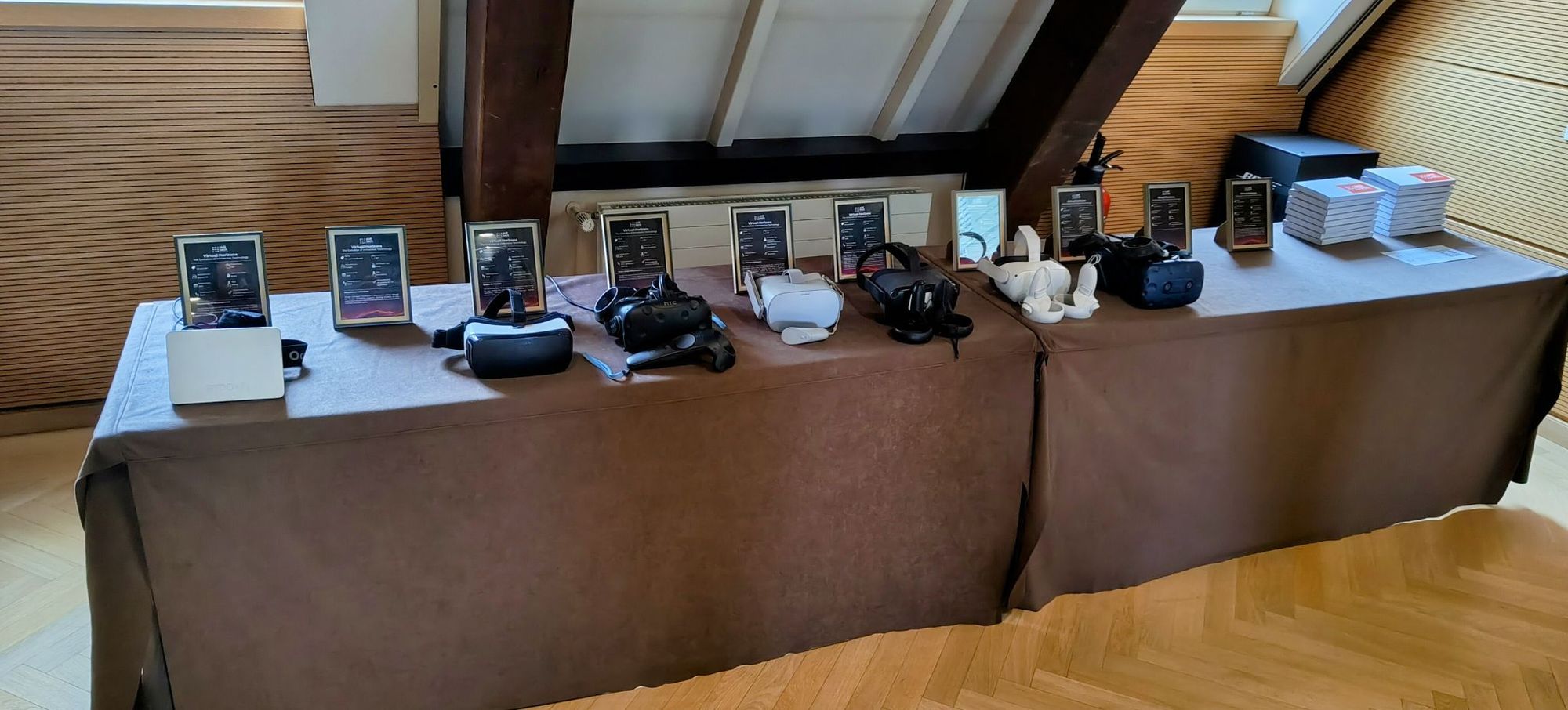
The Critical Issue of Isolation and Immersion
With a modern VR headset, adult users – many experts advise against use before the age of 12, mainly because of neck and eye strain or motion sickness – are transported into a digital world that feels almost real. Images, sounds, or other stimuli create a holistic environment. This phenomenon, called immersion, creates a separation from the physical world. Although the delineation is more fluid than ever, with new features such as hand, body and eye tracking technology allowing users to interact naturally, without the need for physical controllers, we perceived a paradox, at least from a theoretical perspective. Too much immersion could lead to isolation, whereas learning is fundamentally a social experience involving human interaction in diverse forms, rather than an individual cognitive process. We pondered this ambiguity as we designed the four prototypes.
Columbus in particular was designed to provide the most immersive interaction of all the prototypes as participants move physically in the virtual environment and follow the clues to find the treasure. Is that why it received the most praise ? In addition, and this is crucial, Columbus created a group reaction around the user. On several occasions, despite the “distance”, students spontaneously began to help their classmate with the headset. It was a moment of mutual assistance, of palpable camaraderie. Knowledge was shared, tips were exchanged, technology became a channel for human connection.
One scenario to mitigate the plausible isolation of the users would be to mirror the immersive experience from the headset onto an external screen. This would have allowed others in the room to see what was happening in the virtual realm. We deliberately chose not to do it to preserve the "surprise effect" of the prototypes.
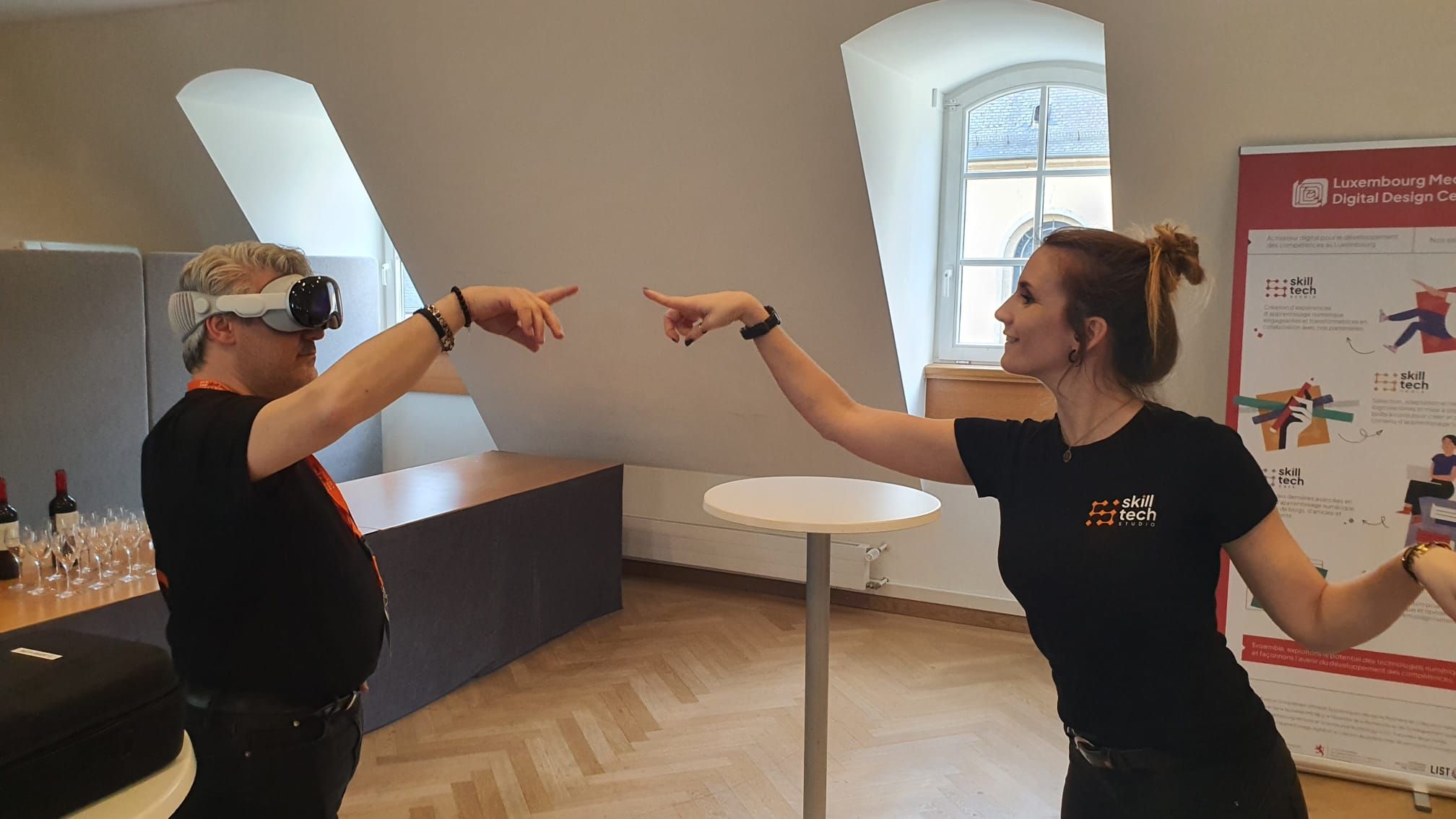
A Delicate Trade-Off
Which brings us to a related point. An important premise upon which we built the workshop was that if we were going to make VR look like an option that could be embraced, then we should try to make the user experience with the prototypes as good as possible, despite the limited amount of preparation time. In fact, we believe that interaction with VR has to be not just good, but flawless. When that’s the case, it creates a highly enjoyable “plug and play” feeling: you put on the headset and you immediately start playing. The set-up time must be reduced, if any. It is like a film with just the right amount of title sequence: it puts you in a good disposition to keep watching.
There are two prerequisites and two consequences. The first one is obvious: the aesthetics of the content. You have to make something that is pleasing to the eye, that creates a nice visual moment. We covered this aspect in the previous paragraph, using Columbus as an example, but Amber’s design has also been complimented on.
The second requirement is even more important : the technical one. Let’s imagine a history teacher who has decided to innovate by covering the chapter on Ancient Greece with VR. His lesson has been prepared on a headset and when he asks his class to put it on, everything goes blank. In this case, the stakes are high as the teacher faces a double risk : compromising his legitimacy and by extension, his relationship with the learning population ; losing faith in technology, both him and the students. The last thing we want is for them to think less of their teacher or that technology is not worth using.
Hence the first consequence : to create a solid environment and limit the risk of failure, a lot of work needs to be done upstream. This is why we strongly recommend that each organisation checks that it has the technical skills and manpower internally to embark on a VR journey beforehand with regard to software development. The second consequence is that the persons involved in the preparation must find a way to reduce the educator’s input at the beginning of the experience, to limit the learning curve as much as possible, so that the usability can be optimised. In other words, a quick handling is the guarantee of an optimal experience. If explanations are long, if learners have to spend minutes before they understand how it works, or if someone from the IT department has to be involved, it can be counter-productive, or worse, it can kill the experience.
From a technical standpoint, we did our best to deliver a reliable and user-friendly end product and we didn’t hear anything about a technical issue during the workshop. Visually, we also were as detailed as possible, paying attention to small details that would mobilise all the participants’ senses as well as their intuition.
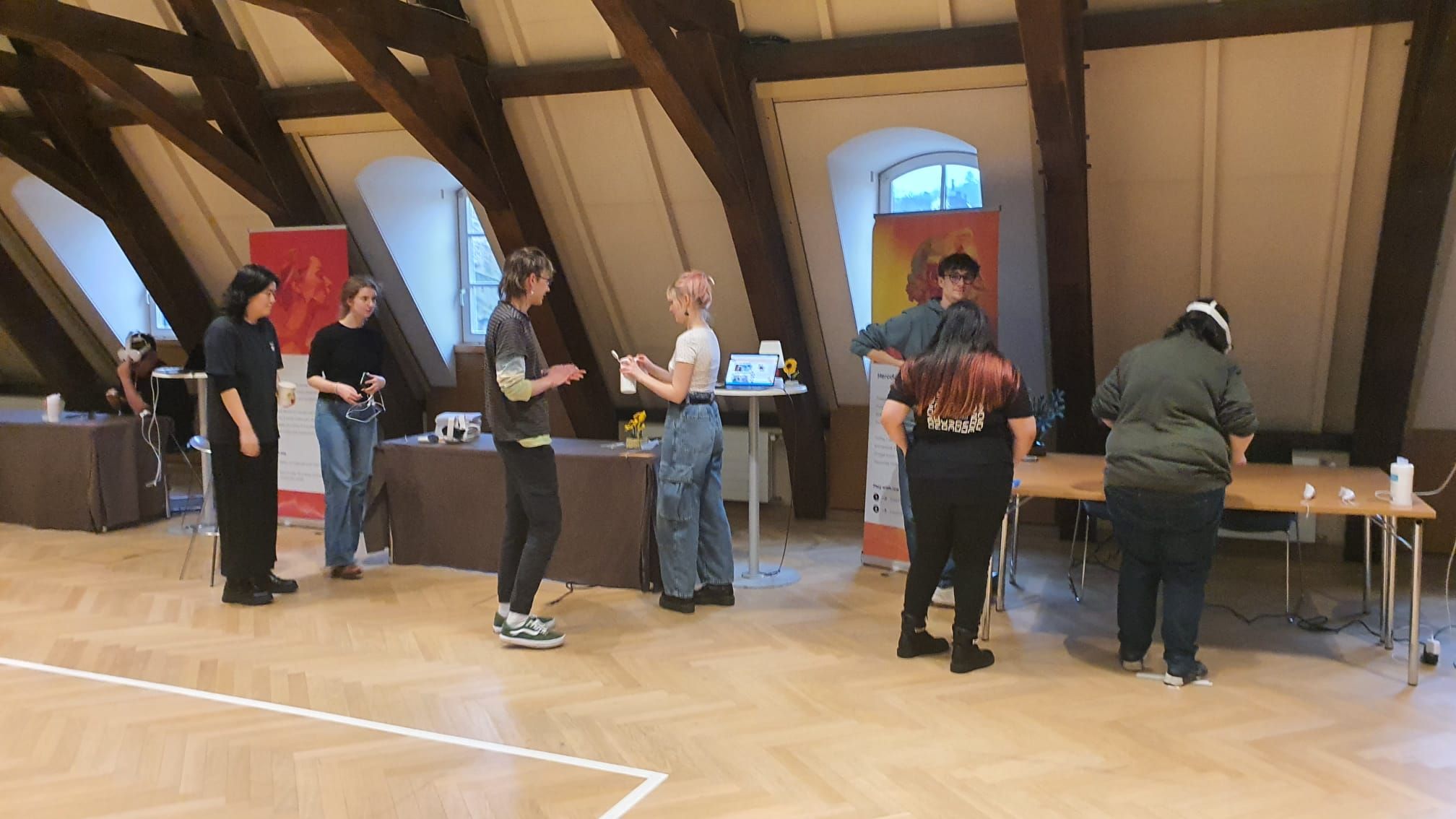
It's Not All About The Money
The last critical finding that we want to share is the cost. In simple terms, basic VR functionality is not that expensive to implement. First of all, as technology advances, the cost of VR applications gets more affordable. Also, people tend to focus too much on the "80/20" paradigm : in very specific but limited cases (the "20%"), VR can indeed be a pricey endeavour – e.g. in an article about how the University of California, Irvine, launched its "Metaversity" program, it costs an average of $50,000 to build the digital twin campus. Let’s not overlook the remaining 80% that requires limited investment.
In terms of software development, we were able to build a VR room in a week. What is more, VR activities do not have to be designed as "one-offs", they can be reused. This can be a decisive factor.
There are two caveats: equipment such as a headset can quickly get costly, a fortiori if you need a lot of them, but prices vary greatly. Another factor with VR headset is the level of interoperability, which can vary. Some VR headsets may work seamlessly with certain devices or platforms but may have compatibility issues with others. Therefore, when choosing to invest into a VR headset, it’s important to consider its compatibility with the devices and platforms you plan to use. Furthermore, there may be hidden costs associated with bringing in an outside party at any point in the process, from content production to software development. This should not be underestimated.
It is in the LMDDC’s DNA, as part of our public service remit, to share project costs with partner public organisations under certain conditions. If you believe in the power of educational technologies and have an idea in mind to collaborate with us, we’d be happy to hear from you!
Last but not least, since we are referring to our mission, we were able to showcase two additional aspects of it: media production and creation of pedagogical content. Although they are inextricably linked, we are able to separate them by designing customisable media assets and scenarios on the one hand, and easy-to-use web-based authoring tools on the other - as demonstrated in our prototypes.
Separating these two concerns with a well-thought design and a touch of abstraction in mind creates very interesting scaling effects and opens the door to the creation of very diverse pedagogical content and contexts without any need for technical or multimedia creation skills. This is particularly true for Herodotus, for which the teacher only needs to upload 360° images and texts related to the subject to transport the learner to virtually any place. Similarly, the Georgia puzzle can be used for any topic. Herodotus and Amber have a narrower scope, but can still be easily customized.Thanks to customisable well-designed VR applications, teachers can focus on the content/pedagogy rather than the technology.
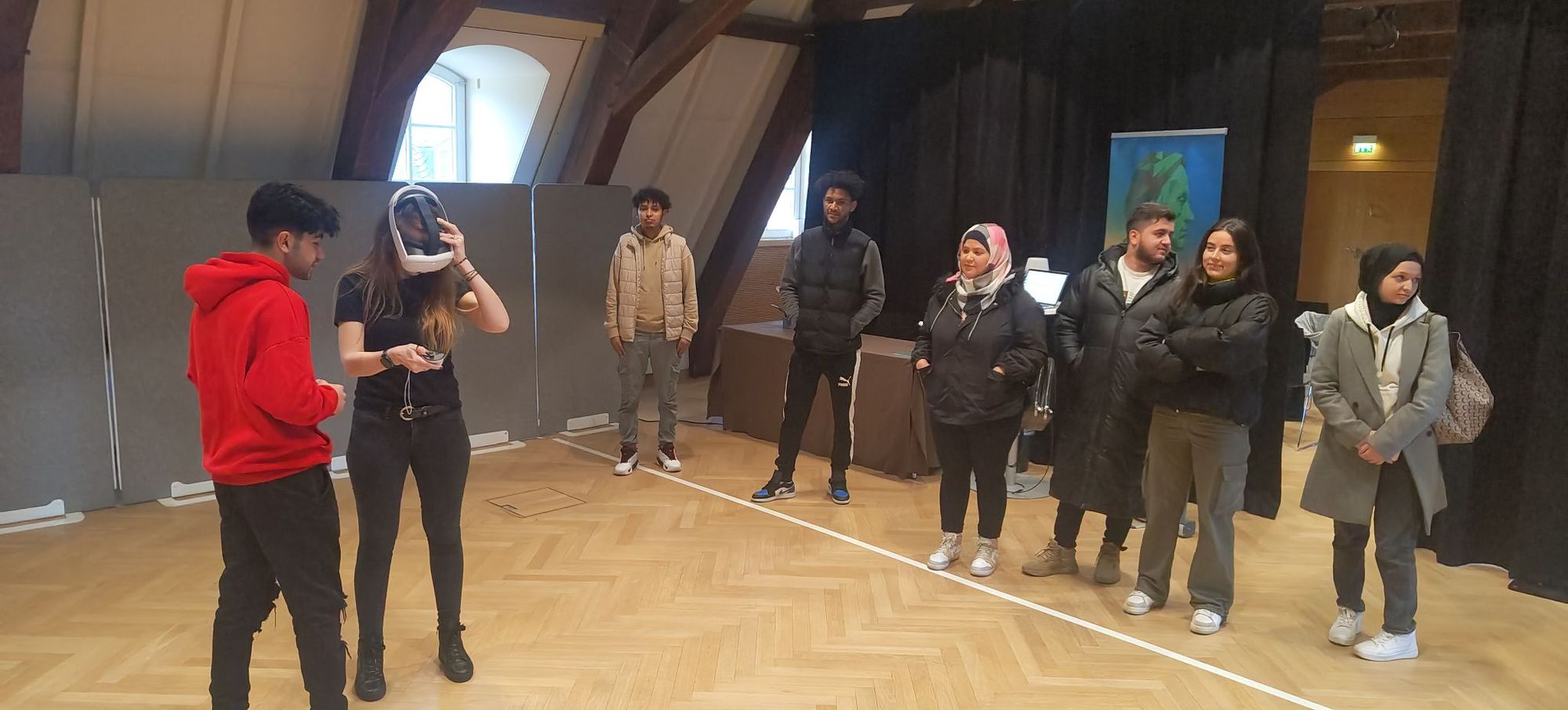
Final Note
VR has gained momentum in recent years due to dramatic technological improvements, and education is undoubtedly one industry where it could be integrated.
We recommend that educators always remember to have a purpose before embarking on VR, and to base any subsequent decision on the student population and their specific, and sometimes unique needs and context. It is essential to first look at a particular curriculum or course before finding ways to attach a technology to it. Failure to consider the target audience in technology-enhanced learning environments can result in learning objectives not being met.
Several trade-offs are also of paramount importance: between educational needs and technical capabilities, in other words finding the right tool for the right pedagogy; between the real utility of VR and the fun it brings.
The safer approach for now is to think of VR as a supplemental learning tool rather than a stand-alone solution. In fields such as chemistry and physics, real experiments remain the best approach, and they can hardly compete with VR, even when they are highly realistic, as with Amber. Indeed, even if Amber, as a VR experience, is quite self-explanatory and provides contextual clues about the chemistry at play, it is not intended to generate the learning on its own. In this particular case, it is necessary for the teacher to provide all the theoretical knowledge and practical exercises (which remain quite abstract in this example), and to use Amber as a complement to "embody" the knowledge, to let the students physically and visually "experience" the chemical principles that have just been explained in the classroom. The same applies, at various levels, to the other prototypes, which need to be embedded in more overarching pedagogical scenarios delivered through other face-to-face or virtual modalities.
In any case, we are glad we were able to deep dive into VR in this workshop and we hope that our practical, real-life examples helped attendees in their own reflections.
We encourage you to watch the videos, reflect on this blog-post and on its potentialities, ask your questions, and spread the word about us, until our next workshop in the fall.


